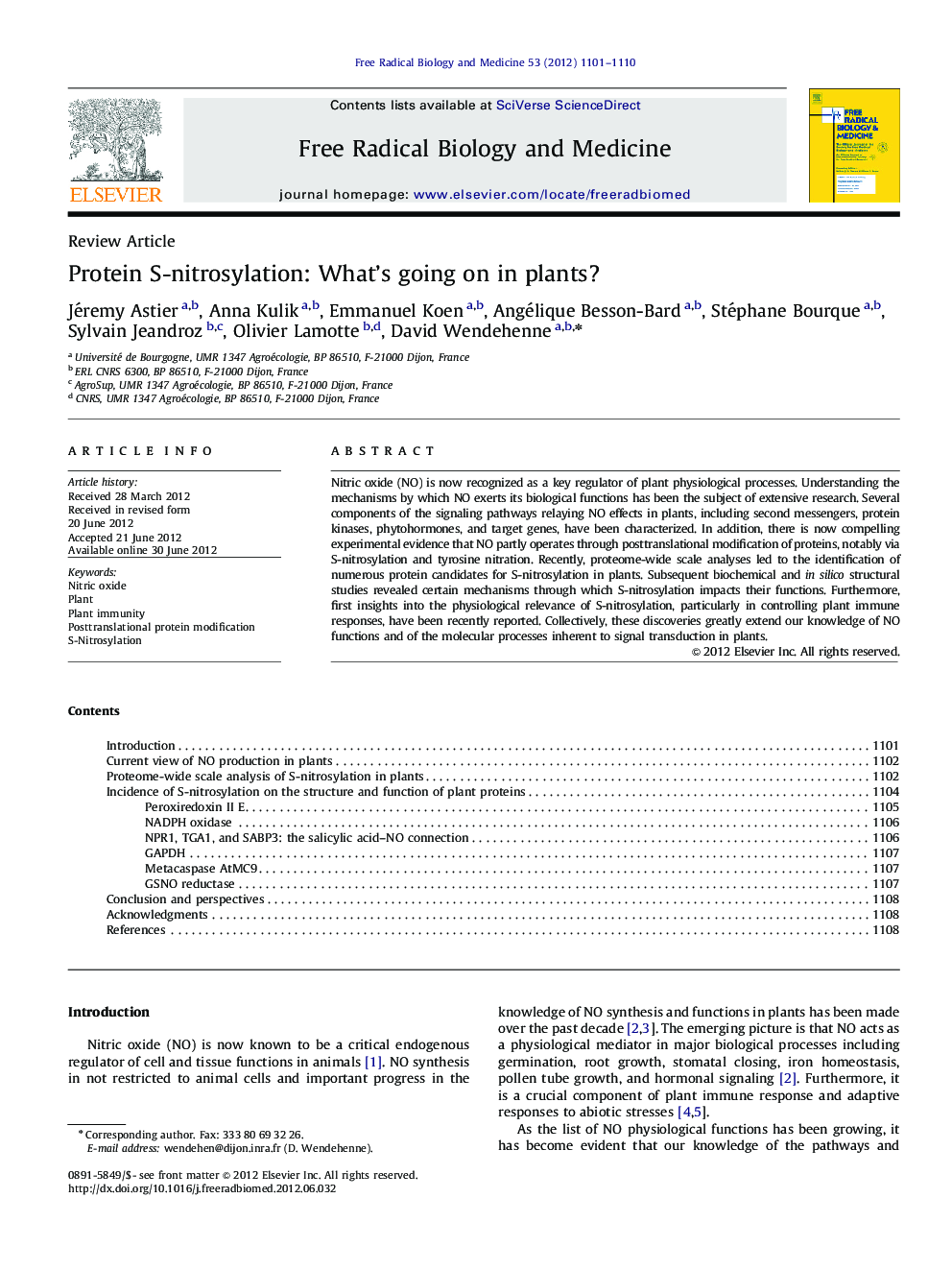| Article ID | Journal | Published Year | Pages | File Type |
|---|---|---|---|---|
| 1908580 | Free Radical Biology and Medicine | 2012 | 10 Pages |
Nitric oxide (NO) is now recognized as a key regulator of plant physiological processes. Understanding the mechanisms by which NO exerts its biological functions has been the subject of extensive research. Several components of the signaling pathways relaying NO effects in plants, including second messengers, protein kinases, phytohormones, and target genes, have been characterized. In addition, there is now compelling experimental evidence that NO partly operates through posttranslational modification of proteins, notably via S-nitrosylation and tyrosine nitration. Recently, proteome-wide scale analyses led to the identification of numerous protein candidates for S-nitrosylation in plants. Subsequent biochemical and in silico structural studies revealed certain mechanisms through which S-nitrosylation impacts their functions. Furthermore, first insights into the physiological relevance of S-nitrosylation, particularly in controlling plant immune responses, have been recently reported. Collectively, these discoveries greatly extend our knowledge of NO functions and of the molecular processes inherent to signal transduction in plants.
Graphical abstractFigure optionsDownload full-size imageDownload high-quality image (160 K)Download as PowerPoint slideHighlights► Plants produce NO through both enzymatic and nonenzymatic processes. ► Recently, numerous S-nitrosylated proteins have been identified in plants. ► Plant S-nitrosylated proteins are involved in major cellular activities. ► S-Nitrosylation impacts protein activities, structures, and probably subcellular localizations.
